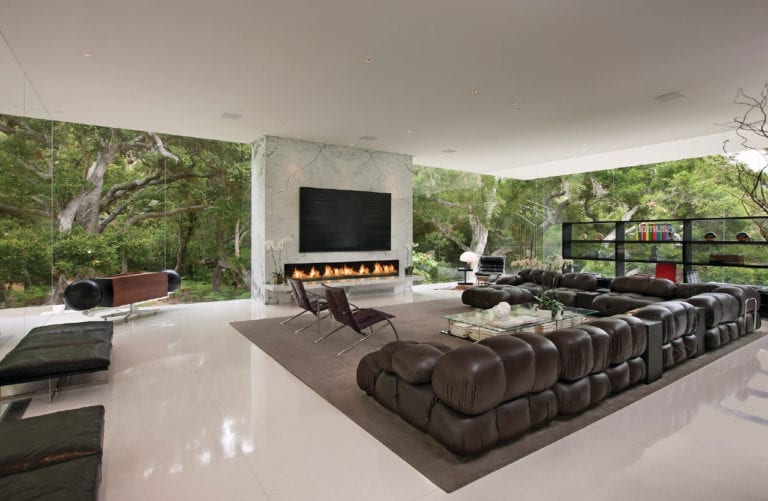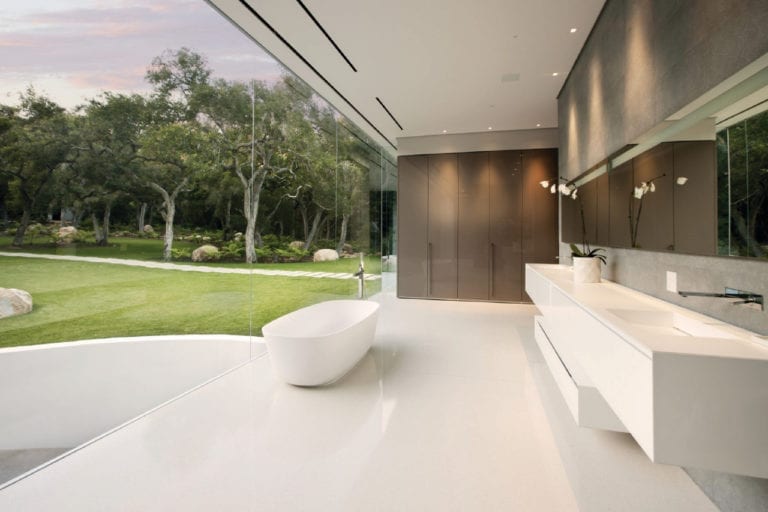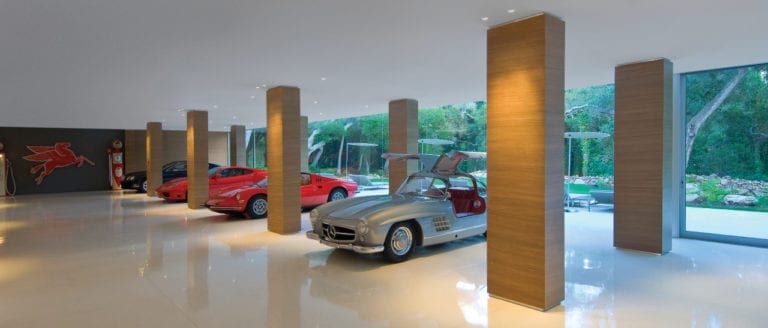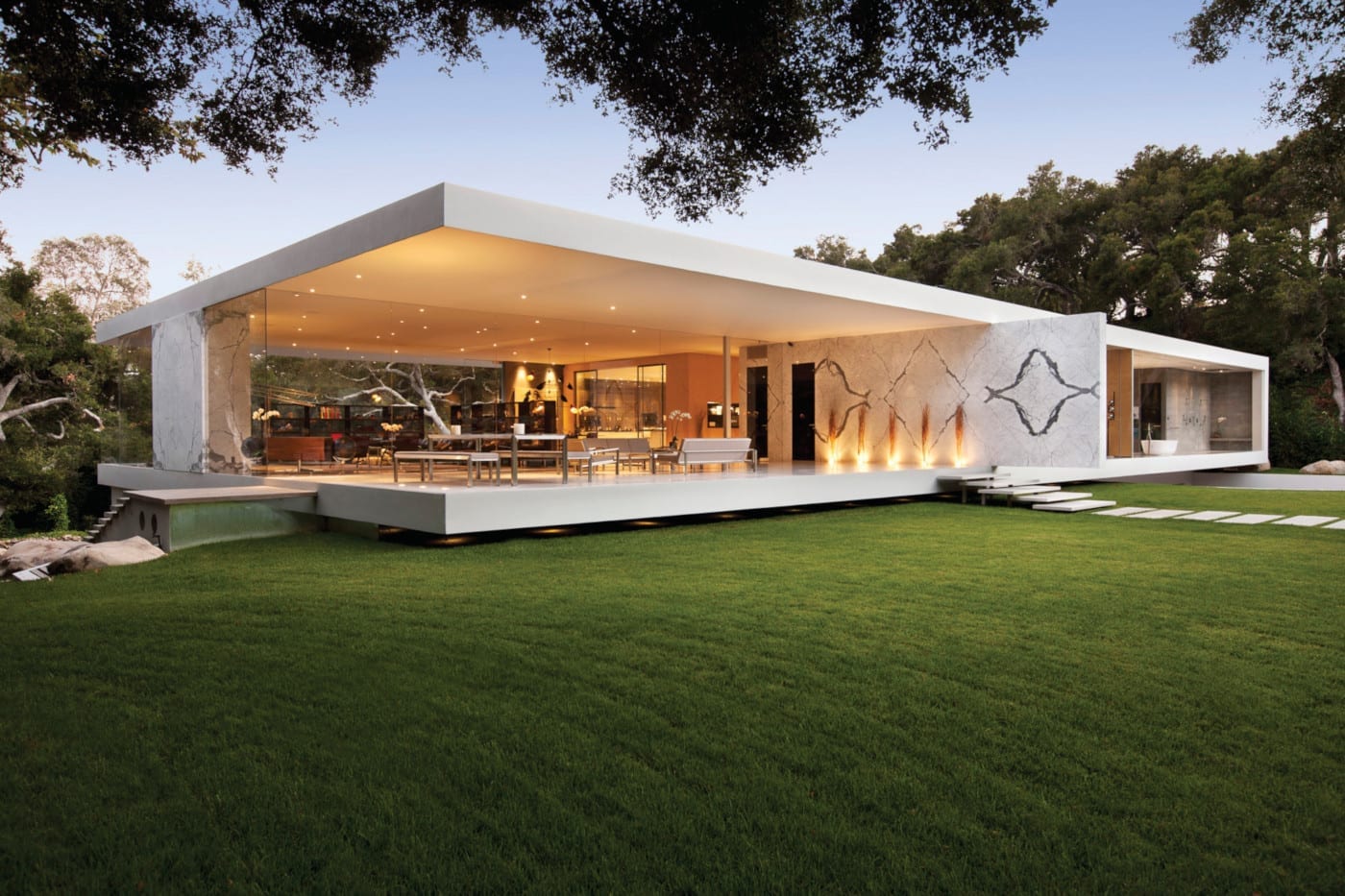California home is a modern minimalist work of art
By Abby Deering
Photographs by Jim Bartsch
Mies van der Rohe, one of the pioneers of modern minimalist architecture, wrote: “Architecture is a language. When you are really good, you can be a poet.”
If the above holds true, Steve Hermann’s Glass Pavilion is a haiku. It is poetry in pure dematerialized form — structurally elegant, restrained, and with meaning wordlessly imbued through unseen inference and ellipsis. It uses an effortless syntax of gleaming glass, concealed steel beams, and marble-clad concrete.
The Glass Pavilion is Hermann’s homage to the renowned Farnsworth House in Plano, Illinois, completed in 1951 by Mies van der Rohe — known simply as “Mies” and famous for ardently adopting the maxim “less is more.”

Hermann, who has designed homes for A-list celebrities, entertainment executives, foreign royalty, and members of Forbes’ top ten wealthiest list, set himself a unique challenge: create the most minimalist house ever designed, but on a large scale.
The 14,000-square-foot luxury home sits in the foothills of Montecito, California, an area known as the “American Riviera” and synonymous with exclusivity, famous for its sprawling estates and glamorous villas — a place where more is more.
Hermann’s Glass Pavilion needed to be in keeping with the estate-like nature of the neighborhood. Ellen Degeneres sold a house on the same street to Google’s billionaire executive chairman before moving to her current Montecito home, recently listed in the high nine figures. Oprah’s ranch, appraised at $80 million, is just up the road.
Hermann approached this challenge by asking himself, “If Mies were alive, how would he design using today’s technologies?” As a result, Hermann was able to push the limits of classic minimalist design, thrusting it into the new millennium.
The five-bedroom, five-and-a-half-bath home rests on a 3.5-acre estate at the end of a long, gated drive. It is completely private and cannot be seen from any road or residence. As one approaches the home and it slowly emerges into view, the striking glass structure appears to be floating — weightlessly poised above the gently rolling lawn. Through sophisticated engineering, the floors and roof of the house have been cantilevered 55 feet in two directions, creating this floating effect. Inside, the ceiling hovers above the walls.

Hermann chose Five Star glass for the walls, an incredibly clear glass usually reserved for jewelry displays. This alone increased building costs by a million dollars. Le Corbusier, a contemporary of Mies, championed the use of glass as a material that “from inside the building, is as pure as a clear sky, and from the outside, provides distinct angles, a sense of flow, brilliance, and fluid movement.” The Glass Pavilion achieves this sense of fluid space with a seamless flow between indoors and outdoors. Inside, the seamless flow of space continues via terrazzo epoxy flooring throughout; and 12-foot-high ceilings and 8-foot-wide passageways afford a museum-like quality.
Unrestricted views of the fern and oak landscape envelop the home, a nod to Mies’ proclamation that “we should attempt to bring nature, houses, and human beings together into a higher unity.” Although unnecessary, an ingenious blind system allows for privacy at the touch of a button.
As with the Five Star glass panels, Hermann spared no expense when it came to the finishes inside the home. The kitchen (named one of America’s Most Decadent Kitchens by Forbes magazine) and baths are by such famous names as Varenna, Poliform and Antonio Lupi.

Kitchen appliances are hidden behind the cabinetry, streamlined and clean. But perhaps the most impressive feature is the adjoining wine room with enough storage for 3,000 bottles. On the lower floor there is an office and art gallery featuring walnut-lined walls. When Hermann lived in the home, he used the gallery space to showcase his vintage car collection — a space generous enough to hold 32 cars.
At the time it was completed, Hermann called the Glass Pavilion the greatest achievement of his career — his grand opus. Viewed as a benchmark of what modernism is and can be, the home garnered a flood of international acclaim as a ground-breaking architectural feat that represents a contemporary marriage of current technology with the trailblazing tenets of minimalist design. E

